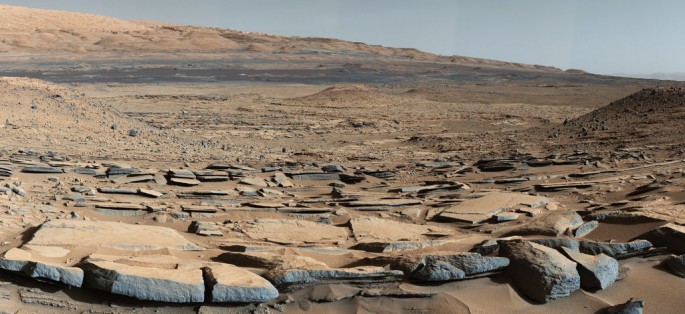Scientists reveal how Mars apparently had ancient lakes that existed long enough for life to thrive on the alien world, billions of years ago.
Prior to this discovery, NASA's Curiosity rover already uncovered evidence of water moisture locked in multiple layers of rock formations and now, freshwater lakes apparently also existed inside the Gale Crater.
Researchers also believe that these lakes are constantly drying and refilling over the years where the entire system of lakes and streams found inside the crater, spanning 96 miles, would probably existed for more than 100,000 years.
Since 2012, Curiosity has been exploring and obtaining rock samples from Gale Crater where the rover began its trek of a three mile mountain called Mount Sharp, from its base in the crater.
According to mission scientist Ashwin Vasavada, observations and data obtained from the rover suggest how a series of long lived streams and system of lakes existed on the surface of Mars between 3.8 billion to 3.3 billion years ago, as ancient sediment slowly built up the lower layers of Mars.
This leads to prior evidence that Curiosity already observed of ancient water environments that used to exist in Gale Crater, that include rivers and deltas as well. Scientists also believe that the crater was formed during a massive asteroid impact on the Martian surface some 3.8 billion years ago.
Researchers also reveal how a groundwater table beneath the surface also existed that would have caused alternate drying out and refilling of the lakes during seasons, meaning the lakes still possess water even when the water disappeared on the surface.
According to lead author of the study and Curiosity team scientist John Grotzinger of the California Institute of Technology, this constantly wet habitat on Mars is most likely conducive for life to evolve on Mars where these environments would also existed for more than 10 million years based on rock evidence on the crater.
Scientists also believe that this liquid water that used to flow and accumulate inside the crater and underneath the surface in reservoirs during that time, is geologically and even biologically significant. This also means that if liquid water used to exist on Mars before, then ancient Mars would have had a thicker atmosphere that could even be similar to Earth.
This new study is published in the journal Science.






















